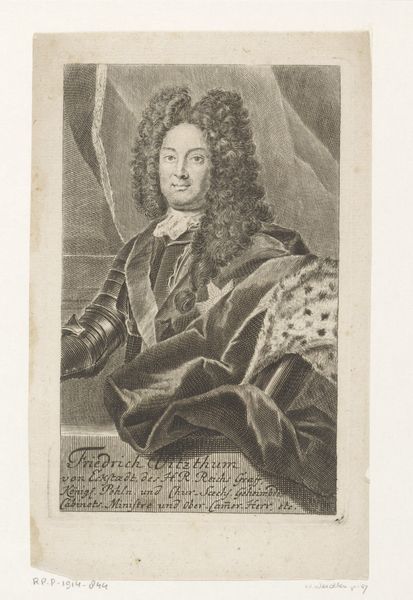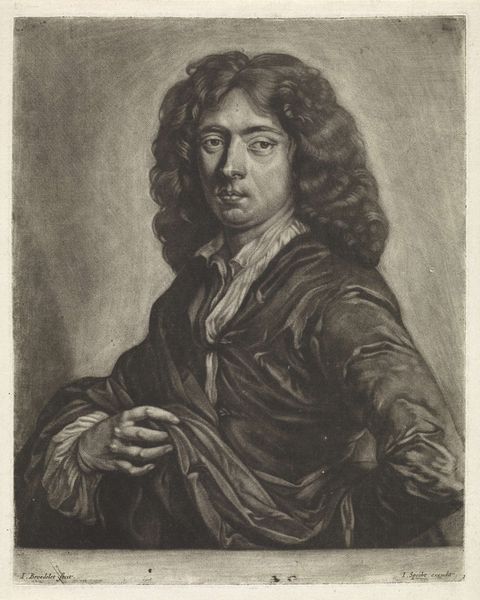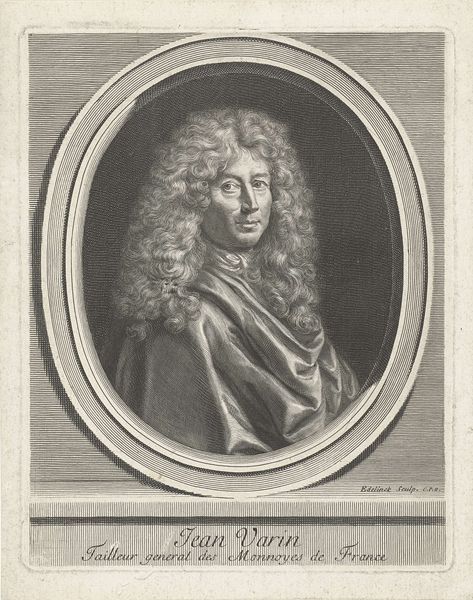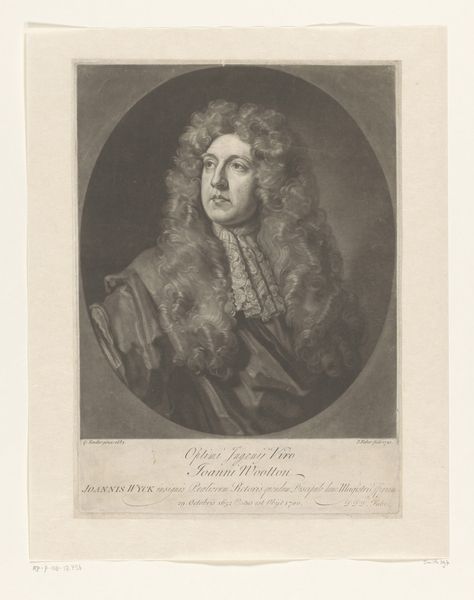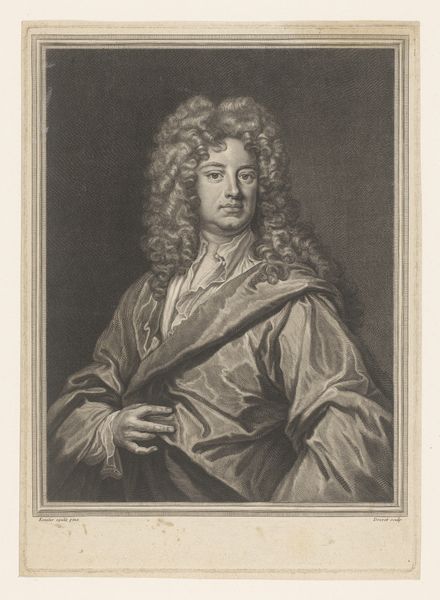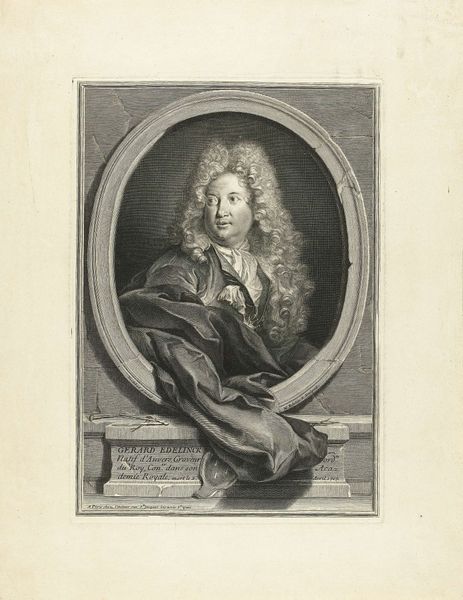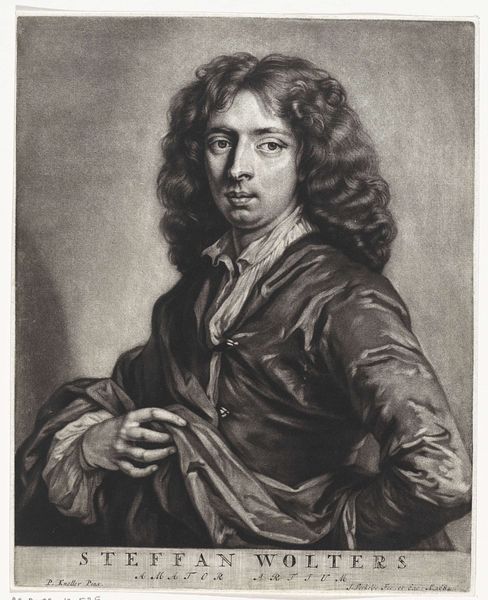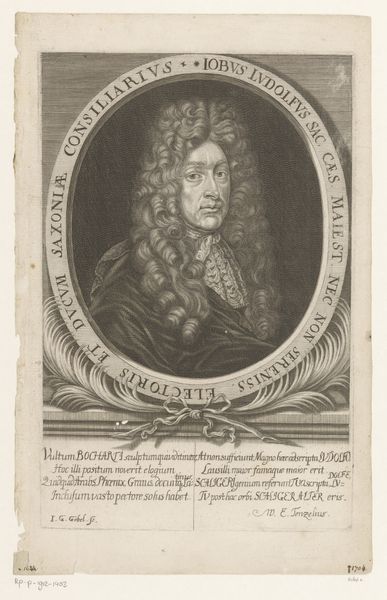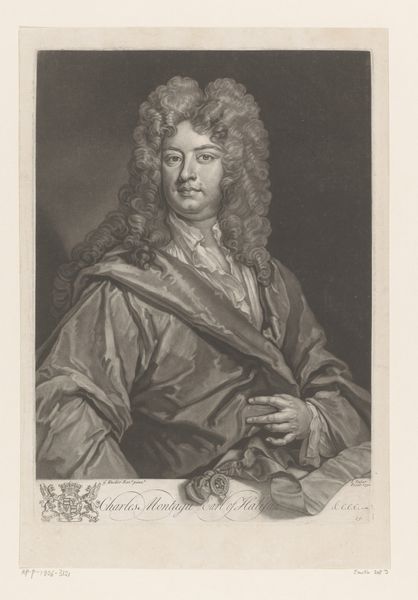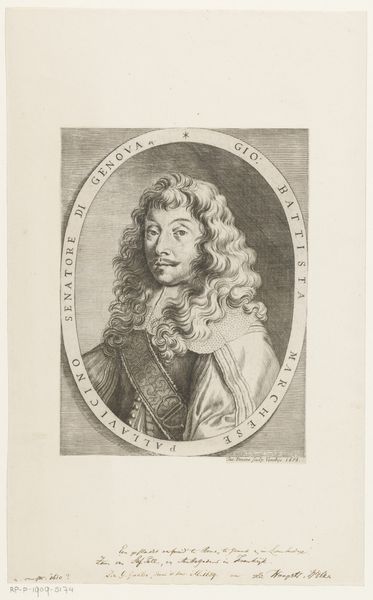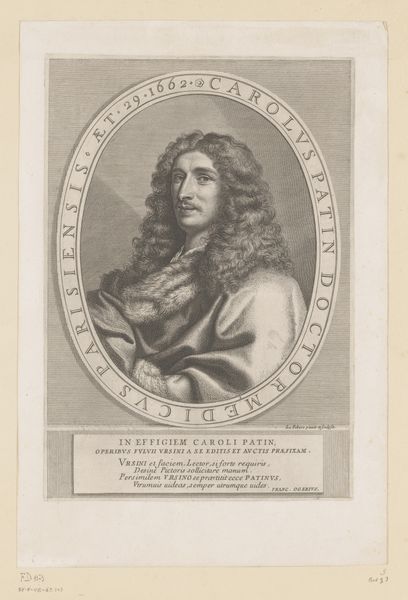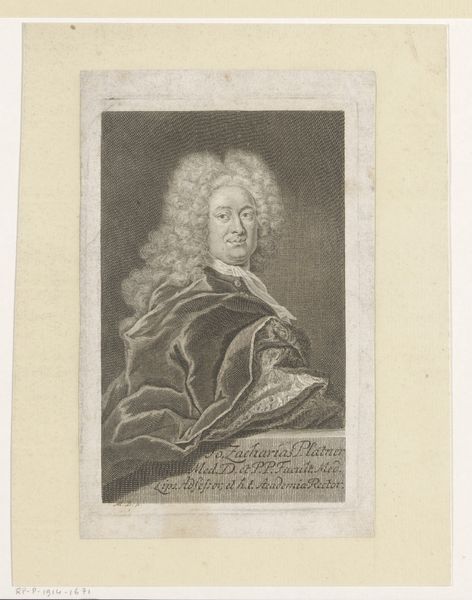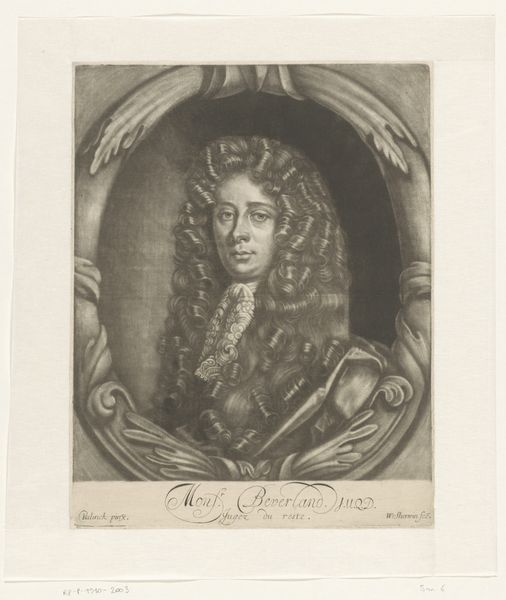
drawing, print, engraving
#
portrait
#
drawing
#
baroque
# print
#
engraving
Dimensions: height 292 mm, width 215 mm
Copyright: Rijks Museum: Open Domain
This is a self-portrait by Jan van der Bruggen, made in 1689 using engraving. A print like this involved a laborious, skilled process, typically done on a copper plate. The artist would have used a tool called a burin to incise lines into the metal, creating grooves that hold ink. The density of these lines determines the tonal range of the image, from light to shadow. Look closely, and you can almost see the effort involved in creating the texture of the hair, the drape of the clothing, and the subtle modeling of the face. The act of engraving, in its meticulousness, elevates the status of the sitter. Prints like this one were not just about artistic expression; they were a key part of the image economy in the 17th century. They played a crucial role in disseminating knowledge, celebrating individuals, and shaping public perception. So, next time you see an engraving, remember the artistry and labor that went into its making, and its importance in shaping the world we see.
Comments
No comments
Be the first to comment and join the conversation on the ultimate creative platform.
